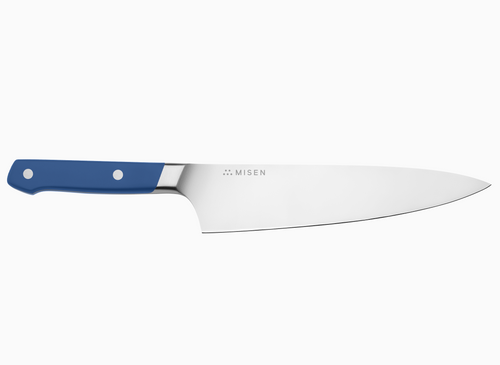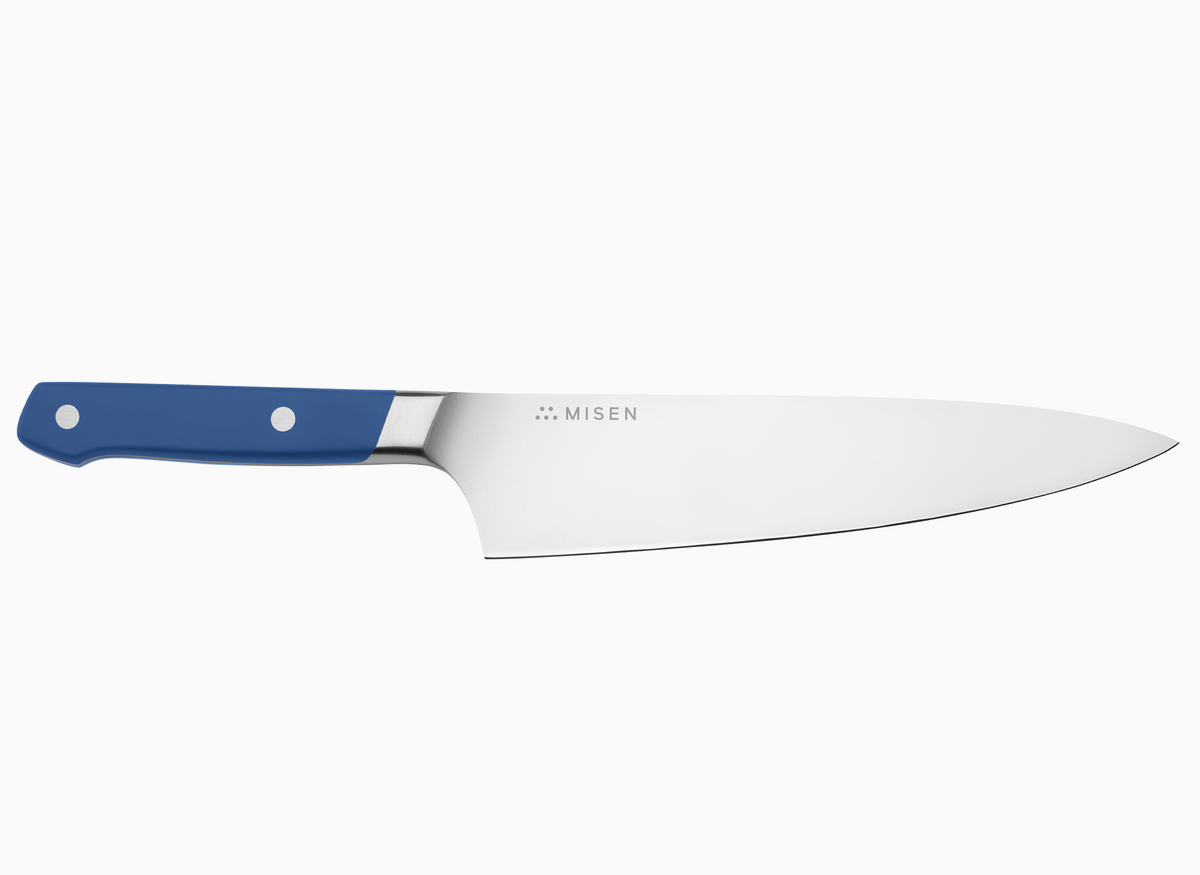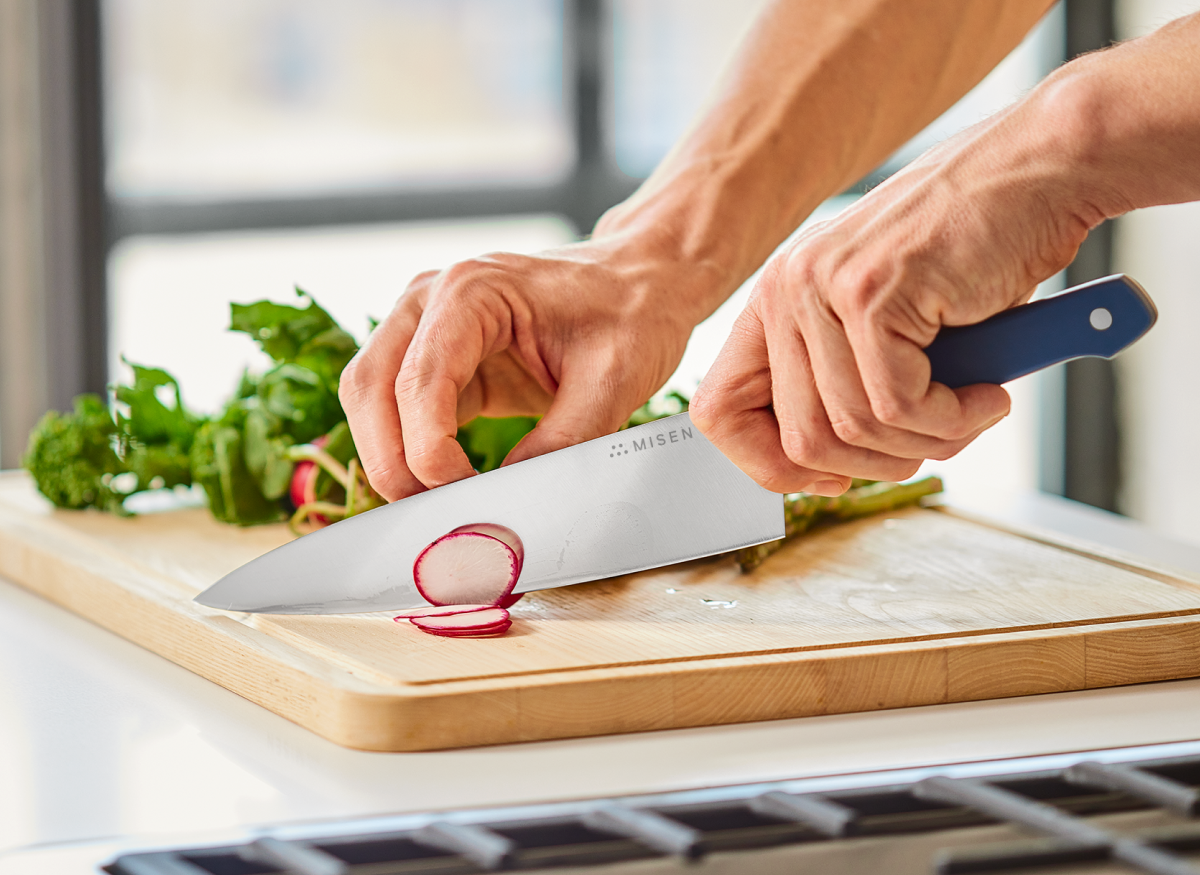How to Clean Stainless Steel Pans

Key Takeaways
- Regular cleaning prevents food residue buildup
- Gentle cleaning methods preserve the pan's surface
- Deep cleaning tackles stubborn stains and discoloration
- Proper drying and storage prevent damage
- Understanding stainless steel properties enhances care
Introduction
The Importance of Pan Maintenance

Maintaining your stainless steel pans is crucial for ensuring their longevity and optimal performance. By establishing proper cleaning habits and using gentle techniques, you can keep your cookware functional for years to come. This investment in care not only preserves the pan's quality but also enhances your overall cooking experience[1].
Regular cleaning after each use prevents food residue from hardening on the surface, making future cleaning easier. Equally important is careful storage; using pan protectors or placing soft cloths between stacked pans can prevent scratches and dents[1].
Understanding the properties of stainless steel and how it reacts to different cooking methods is key to maintaining your pans. Avoiding overheating and preventing food from burning and sticking can significantly reduce cleaning difficulties[2].
Understanding Stainless Steel Pans
Stainless steel pans are marvels of metallurgical engineering, combining durability with culinary versatility. At their core, these pans are composed of an iron-carbon alloy enhanced with chromium and nickel. The chromium forms a protective layer, preventing corrosion and staining, while nickel adds shine and further corrosion resistance[4].
Most high-quality cookware uses 18/8 or 18/10 grade stainless steel, indicating the percentages of chromium and nickel respectively. The term "fully-clad" refers to the layered construction of these pans, typically featuring a heat-conducting core (often aluminum or copper) sandwiched between layers of stainless steel[5].
This multi-ply structure ensures even heat distribution and combines the strengths of different materials. Stainless steel pans excel in heat retention and distribution, making them ideal for various cooking techniques. Their non-reactive nature means they won't interact with acidic ingredients, preserving food flavors[4].
Why Misen Stainless Steel Pans Stand Out
At Misen, we've designed our stainless steel pans with exceptional performance and thoughtful features in mind. Our pans exhibit remarkable heat retention capabilities, even on challenging cooking surfaces like electric coil stoves. The pan's ability to distribute heat evenly across its surface ensures consistent cooking results.
A standout feature of our pans is the rolled lip, which not only enhances sanitary properties but also contributes to longevity. The interior geometry of Misen pans is particularly noteworthy, offering a unique cooking surface without harsh curves towards the edges - a design aspect that appeals to many culinary enthusiasts[6].
Our Misen Chef's Knife pairs perfectly with our stainless steel pans, offering precision and control for all your food preparation needs.
Understanding the Cleaning Process

Basic Cleaning Method
Daily Cleaning Routine
For everyday maintenance of your stainless steel pans, a simple yet effective approach is key. Begin by allowing the pan to cool completely to prevent warping. Then, scrub the pan with hot, soapy water using a non-abrasive sponge. This gentle method preserves the pan's surface while effectively removing most food residues[7].
For stubborn food particles, fill the pan with soapy water, bring it to a boil, and use a spatula or wooden spoon to dislodge the stuck-on bits. This technique leverages heat to soften food residues, making them easier to remove without harsh scrubbing[7].
Tackling Tough Stains
When faced with more challenging messes like burnt food or oil, a more robust cleaning method is necessary. Baking soda emerges as a powerful, yet gentle cleaner for stainless steel. Create a paste by mixing baking soda with water and apply it to the affected areas[7].
For particularly stubborn stains, add a few spoonfuls of baking soda to the pan with enough water to cover the burnt areas, then bring to a boil and simmer until most of the water evaporates. This process helps lift even the most tenacious burnt-on food. After cooling, scrub the pan with a non-abrasive sponge and wash thoroughly[7].
Removing Discoloration
Stainless steel pans can develop rainbow-like discoloration or chalky white spots over time. To address these issues, vinegar proves to be an excellent remedy. For rainbow stains caused by overheating, simply wipe the pan with a mixture of vinegar and water using a soft sponge[7].
For white, cloudy residue left by hard water, boil a solution of one part vinegar to three parts water in the pan. After cooling, wash the pan with soap and water to restore its shine. These acidic treatments effectively break down mineral deposits and oxidation without damaging the stainless steel surface[7].
Deep Cleaning Method
For a thorough deep clean of your stainless steel pans, start by covering the bottom with baking soda and adding boiling water to create a quarter-filled pan. Bring this mixture to a boil and let it simmer for 10 minutes. For stubborn stains, add a few tablespoons of white vinegar before boiling[10].
Once cooled, scrub with a non-abrasive sponge and rinse thoroughly. Alternatively, use lemon halves submerged in boiling water for 10 minutes, then use the leftover lemons to scrub the pan's surface[10].
For exterior cleaning, pour hot water over the pan's back, sprinkle baking soda, and let it sit for 10-20 minutes or overnight for tougher stains. Squeeze lemon juice over the baking soda, then scrub with a pot brush or copper cloth[10].
To remove blue-ish rainbow stains caused by heat tints, apply white vinegar diluted with water and rub with a soft cloth. For optimal results, always let the pan cool before cleaning, use protective gloves, and avoid abrasive cleaners or tools that can scratch the stainless steel surface[11].
Maintenance Cleaning
Maintenance cleaning of your stainless steel pans is crucial for preserving their longevity and performance. For routine care after each use, dampen the cooled pan with warm water and create a paste using a gentle cleanser. Apply this paste with a soft cloth, working in circular motions from the center outward, and let it sit for precisely one minute[12].
This timing is critical to avoid potential damage while ensuring effective cleaning. Rinse thoroughly with hot, soapy water and repeat if necessary. For stubborn stains or scorched bottoms, a more intensive approach may be required[12].
By following these maintenance cleaning techniques, you can keep your stainless steel cookware in excellent condition, potentially saving you from costly replacements and ensuring your pans remain functional for years to come.
Step-by-Step Guide to Basic Cleaning
Gather Your Cleaning Supplies

To effectively clean your stainless steel pans, gather the essential supplies beforehand. Start with a gentle dish soap and warm water, which form the foundation of most cleaning methods. Pair these with a non-abrasive sponge or soft cloth to avoid scratching the pan's surface.
For tougher cleaning jobs, keep baking soda on hand as a mild abrasive. White vinegar is another versatile cleaner, particularly useful for removing discoloration and hard water stains. To protect your pans during storage, consider investing in pan protectors or a dedicated cookware organizer.
By assembling these supplies, you'll be well-equipped to tackle any cleaning challenge your stainless steel pans may present.
The Cleaning Process
The cleaning process for stainless steel pans involves several key steps. Begin by allowing the pan to cool completely to prevent warping. For everyday cleaning, scrub the pan with hot, soapy water using a non-abrasive sponge. If food particles remain stuck, fill the pan with soapy water, bring it to a boil, and use a spatula or wooden spoon to dislodge the residue[7].
For tougher messes, baking soda proves effective. Create a paste with water or add a few spoonfuls to the pan with water, bring to a boil, and simmer until most liquid evaporates. Once cooled, scrub and wash as usual[7].
To tackle discoloration, vinegar is your ally. For rainbow stains caused by overheating, wipe the pan with a vinegar-water mixture. For chalky residue from hard water, boil a 1:3 vinegar-water solution in the pan, let it cool, then wash normally[8].
Remember to always dry your pans immediately after washing to prevent water spots, and avoid using abrasive tools or harsh cleaners that can damage the stainless steel surface[7].
Drying and Storing Your Pan
After cleaning your stainless steel pan, proper drying and storage are crucial for maintaining its pristine condition. Immediately after washing, wipe the pan dry with a microfiber cloth to prevent water spots from forming[14].
For stubborn water spots, a quick wipe with a damp sponge sprinkled with baking soda can effectively remove them[7]. When it comes to storage, protect your pans from scratches by using cookware protectors between each piece when stacking.
To prevent warping, always allow your pan to cool completely before washing or storing. This simple step can significantly extend the life of your cookware[8]. By following these drying and storage practices, you'll ensure your stainless steel pans remain in top condition, ready for your next culinary adventure.
Step-by-Step Guide to Deep Cleaning

When Deep Cleaning Is Necessary
Deep cleaning becomes necessary when regular maintenance fails to remove stubborn stains, burnt-on food, or discoloration. Telltale signs include rainbow-like heat tints, chalky white residue from hard water, or a buildup of grease that resists normal cleaning methods.
These issues often arise from high-heat cooking, mineral deposits, or accumulated use over time. For instance, overheating can cause blue-ish prismatic stains, while hard water may leave cloudy spots[10].
Additionally, if you notice food particles clinging tenaciously to the pan's surface despite regular washing, it's time for a deep clean. This is particularly crucial for maintaining the pan's performance and preventing flavor transfer between dishes.
Remember, the longer you wait to address these issues, the more challenging they become to resolve. Therefore, it's advisable to perform a deep clean periodically, even if the pan doesn't appear visibly dirty, to maintain its optimal condition and extend its lifespan[7].
Deep Cleaning Supplies
To effectively deep clean your stainless steel pans, you'll need a few key supplies. Start with the basics: dish soap and warm water, which form the foundation of most cleaning methods. For tougher jobs, baking soda is an essential mild abrasive that can tackle stubborn stains without damaging the surface.
White vinegar is another versatile cleaner, particularly useful for removing discoloration and hard water stains. Lemons serve as a natural cleaning agent, their acidity helping to break down residue and impart a fresh scent.
Soft cloths or non-abrasive sponges are crucial to avoid scratching the pan's surface. A pot brush or copper cloth can be useful for more vigorous scrubbing when needed. For precision application of cleaning agents, a tea strainer can be helpful in evenly distributing baking soda.
Lastly, protective gloves are advisable to shield your hands during the cleaning process, especially when using hot water or stronger cleaning solutions[7][12][10].
The Deep Cleaning Process
The deep cleaning process for stainless steel pans involves several effective methods. One approach is to cover the pan's bottom with baking soda and add boiling water to create a quarter-filled pan. Bring this mixture to a boil and simmer for 10 minutes. For stubborn stains, add a few tablespoons of white vinegar before boiling[10].
Once cooled, scrub with a non-abrasive sponge and rinse thoroughly. Alternatively, use lemon halves submerged in boiling water for 10 minutes, then use the leftover lemons to scrub the pan's surface[10].
For exterior cleaning, pour hot water over the pan's back, sprinkle baking soda, and let it sit for 10-20 minutes or overnight for tougher stains. Squeeze lemon juice over the baking soda, then scrub with a pot brush or copper cloth[10].
To remove blue-ish rainbow stains caused by heat tints, apply white vinegar diluted with water and rub with a soft cloth[10]. For optimal results, always let the pan cool before cleaning, use protective gloves, and avoid abrasive cleaners or tools that can scratch the stainless steel surface[11].
Regular Maintenance for Longevity
Preventing Damage and Wear

To prevent damage and wear on your stainless steel pans, it's crucial to adopt proper cooking techniques and handling practices. Always preheat your pan before adding oil, as this creates a temporary nonstick surface that reduces food adhesion[8].
When cooking, allow cold ingredients to reach room temperature before adding them to the hot pan, as sudden temperature changes can cause food to stick and potentially damage the surface[8]. Avoid using high heat for preheating, as stainless steel's excellent heat retention can lead to overheating and potential warping[8].
When cleaning, always let the pan cool completely before washing to prevent warping, and use non-abrasive cleaners and sponges to protect the finish[14]. Be cautious with chlorides, found in table salt and many cleaners, as they can break down the protective passivity layer of stainless steel[15].
To maintain the pan's integrity, avoid using steel wool or wire brushes, which can cause mechanical abrasions and lead to rusting[15]. By following these preventive measures, you can significantly extend the life and performance of your stainless steel cookware.
Maintaining Shine and Luster
To maintain the shine and luster of your stainless steel pans, regular care and proper cleaning techniques are essential. After each use, hand wash your pan with warm, soapy water and a non-abrasive sponge, then immediately dry it with a microfiber cloth to prevent water spots[14].
For stubborn stains or discoloration, a mixture of vinegar and water can work wonders. Simply pour some vinegar into the pan, let it sit for a few minutes, then scrub gently with a non-abrasive sponge before rinsing and drying[14].
To tackle tougher buildup, create a paste with baking soda and water, apply it to the pan's surface, and gently scrub before rinsing thoroughly[7]. For optimal shine, consider using a product specifically designed for cleaning stainless steel, but avoid those containing ammonia or bleach as they can react negatively with the metal[16].
By following these practices and avoiding harsh abrasives or cleaners, you'll keep your stainless steel pans gleaming and in pristine condition for years to come.
Conclusion
Proper care and maintenance of your stainless steel pans are essential for ensuring their longevity and optimal performance. By following the cleaning methods, deep cleaning techniques, and maintenance tips outlined in this guide, you can keep your cookware in top condition for years to come.
Remember to use gentle cleaning methods for daily maintenance, tackle tough stains with natural solutions like baking soda and vinegar, and perform deep cleaning when necessary. Proper drying and storage are equally important in preventing damage and maintaining the pan's shine.
At Misen, we're committed to providing you with high-quality cookware that stands the test of time. Our stainless steel pans are designed to deliver exceptional performance and durability, making your cooking experience more enjoyable and efficient.
Ready to elevate your cooking game with premium stainless steel cookware? Shop Now and discover the Misen difference in your kitchen.
Proper care and maintenance of stainless steel pans is essential for optimal performance and longevity. This guide covers effective cleaning methods, deep cleaning techniques, and maintenance tips to keep your cookware in top condition.
References
- How to Clean Stainless Steel Pans - Bluewater
- Cleaning Burnt Stainless Steel Pans - De Buyer USA
- The Science Behind Stainless Steel Cookware - Avias World
- Everything You Need to Know About Stainless Steel Cookware - Proclamation Goods
- Misen Stainless Steel Frying Pan - Amazon
- How to Clean Stainless Steel Pans - Better Homes & Gardens
- Our Guide for Caring for & Cleaning Stainless Steel Pans - Food52
- How to Clean a Stainless Steel Pan Inside and Out - Borough Kitchen
- How to Clean Stainless Steel Pans - Southern Living
- How to Clean Stainless Steel Pans - Bar Keepers Friend
- How to Care for a Stainless Steel Pan to Prevent Burning and Warping - Martha Stewart
- Stainless Steel Care and Cleaning - Vollrath Foodservice
- How to Make Any Stainless Steel Pan Shine - Cristel USA








